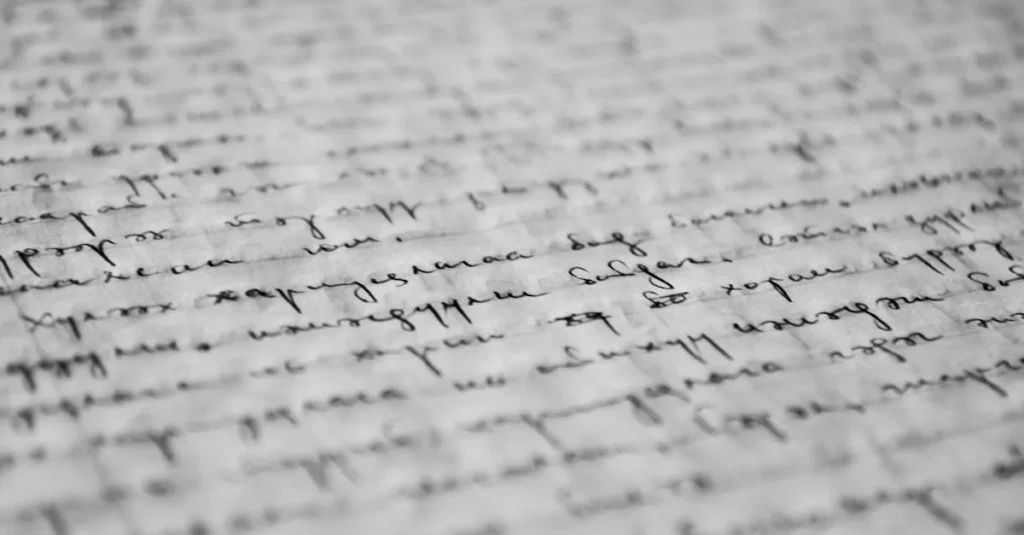Writing a proper excuse letter remains a crucial skill in today’s professional and academic environments. Whether it’s for school, work, or other commitments, knowing how to craft a polite and effective excuse letter can make a significant difference in maintaining good relationships with teachers, employers, or colleagues.
An excuse letter serves as a formal document explaining one’s absence or inability to attend an important event or obligation. It should strike the right balance between being honest, professional, and respectful while clearly communicating the reason for the absence. Understanding the essential elements and proper format of an excuse letter helps ensure the message is received positively and maintains the writer’s credibility.
Absent:8tqqlqc-2ko= Excuse Letter
An excuse letter for absence is a formal document that explains why someone missed work, school, or an important event. The letter serves as an official record of absence documentation between the writer and recipient.
Common types of excuse letters include:
- Medical excuse letters supported by doctor’s notes
- Family emergency notifications describing personal situations
- School absence explanations from parents to teachers
- Professional absence documentation for work supervisors
The core components of an excuse letter comprise:
- Contact information of sender and recipient
- Date of writing and dates of absence
- Clear explanation for the absence
- Supporting documentation references
- Professional closing and signature
| Purpose | Recipient | Required Elements |
|---|---|---|
| School | Teacher/Administrator | Parent signature, dates, reason |
| Work | Supervisor/HR | Employee ID, department, medical proof |
| Events | Organizer/Host | Registration details, advance notice |
A properly formatted excuse letter includes:
- Official letterhead when applicable
- Formal business letter structure
- Professional tone throughout
- Specific dates and timeframes
- Direct explanation without unnecessary details
- Appropriate supporting documents
- Educational institutions require parent/guardian signatures
- Companies expect employee identification details
- Medical facilities mandate healthcare provider verification
- Government agencies need official documentation
Key Components of an Effective Excuse Letter
An effective excuse letter contains specific elements that communicate absence information professionally. These components work together to create a clear documented record of the situation.
Date and Contact Information
The header section includes the current date followed by the recipient’s complete details. Essential contact elements comprise:
- Full name of the recipient with proper title (Dr., Mr., Ms.)
- Organization name or department
- Complete address with postal code
- Sender’s contact information including phone number email address
- Reference numbers or employee/student ID when applicable
Clear Explanation of Absence
The body paragraph presents a direct statement of the absence cause without unnecessary details. Critical elements include:
- Specific dates of absence (start date end date)
- Primary reason for missing work or class
- Supporting medical documentation references
- Impact on responsibilities or assignments
- Proposed plan to make up missed work
- Acknowledgment of any inconvenience caused
- Professional letterhead or header block
- Standard business letter spacing (single-spaced paragraphs 1-inch margins)
- Clear paragraph organization with topic sentences
- Formal closing phrase (“”Sincerely”” “”Respectfully””)
- Handwritten signature in blue or black ink
- Typed name below signature
- “”Enclosure”” notation for attached documents
- Carbon copy (cc) line for additional recipients
Common Reasons for Writing Excuse Letters
Excuse letters address various legitimate circumstances that prevent attendance at work, school, or important events. These situations require clear documentation and specific explanations.
Medical and Health-Related Absences
Medical conditions constitute a primary reason for writing absent:8tqqlqc-2ko= excuse letters in professional and academic settings. Common health-related absences include:
- Scheduled medical procedures requiring recovery time
- Acute illnesses such as flu, COVID-19 or severe infections
- Dental emergencies like tooth extractions or oral surgeries
- Physical injuries from accidents requiring immediate treatment
- Mental health appointments with healthcare professionals
- Chronic condition flare-ups affecting daily activities
| Medical Documentation Type | Required Elements |
|---|---|
| Doctor’s Note | Diagnosis code, date of visit, return date |
| Hospital Records | Admission date, discharge summary |
| Lab Test Results | Test date, medical facility details |
- Death of immediate family members requiring funeral attendance
- Childbirth or adoption proceedings
- Care for critically ill relatives
- Legal proceedings or court appearances
- Natural disasters affecting residence
- Domestic emergencies like flooding or fire damage
| Emergency Type | Documentation Examples |
|---|---|
| Bereavement | Death certificate, obituary |
| Legal Matters | Court summons, attorney letter |
| Family Care | Hospital records, caregiver forms |
Tips for Writing a Professional Excuse Letter
Use Clear and Direct Language
Professional excuse letters require precise language that communicates the message without ambiguity. Start sentences with action verbs like “”attended,”” “”experienced,”” or “”encountered.”” Include specific dates, times, and relevant details to support the reason for absence.
Keep it Brief and Focused
A professional excuse letter maintains a single-page format with 3 to 4 concise paragraphs. Focus on essential information: the dates of absence, the reason, and any follow-up actions. Remove unnecessary details or emotional language that doesn’t support the main message.
Maintain a Respectful Tone
The letter’s tone reflects professionalism through appropriate salutations like “”Dear Mr. Smith”” or “”Dear Professor Johnson.”” Express gratitude for understanding and avoid casual phrases or slang terms. Include polite closing statements such as “”Sincerely”” or “”Best regards.””
Provide Supporting Documentation
Attach relevant documentation to validate the excuse:
- Medical certificates from healthcare providers
- Death certificates for bereavement leave
- Court orders for legal proceedings
- Travel receipts for transportation delays
- Emergency service reports for natural disasters
Follow Proper Formatting Guidelines
Format the letter using standard business conventions:
- 1-inch margins on all sides
- 12-point professional fonts (Times New Roman Arial)
- Single spacing within paragraphs
- Double spacing between sections
- Left alignment for all text
- Full date format (Month Day, Year)
Proofread for Accuracy
Review the letter for:
- Correct spelling of names titles
- Accurate dates times
- Complete contact information
- Proper grammar punctuation
- Consistent formatting
- Signature placement
- Email within 24 hours of absence
- Hand-deliver upon return to work
- Mail 3-5 business days before planned absence
- Submit through official online portals
- Copy relevant supervisors or administrators
Sample Templates and Examples
Medical Excuse Letter Template
[Date]
[Recipient's Name]
[Organization/Institution]
[Address]
Dear [Recipient's Name],
I'm writing to inform you of my absence from [work/class] on [date(s)] due to [specific medical condition/procedure]. My doctor has advised [specific medical recommendation] during this period.
I've attached documentation from [Doctor's Name/Medical Facility] confirming my medical visit and treatment plan.
I'll return to [work/class] on [date] and will promptly complete any missed [assignments/responsibilities].
Sincerely,
[Your Name]
[Your Position/Student ID]
Family Emergency Template
[Date]
[Recipient's Name]
[Organization/Institution]
[Address]
Dear [Recipient's Name],
This letter serves to notify you of my unexpected absence on [date(s)] due to a family emergency requiring my immediate attention.
I appreciate your understanding in this matter and will return to [work/class] on [date]. I'll ensure all [pending tasks/missed assignments] are completed upon my return.
Respectfully,
[Your Name]
[Your Position/Student ID]
Sample School Absence Note
[Date]
Dear [Teacher's Name],
My child, [Student's Name], was absent from school on [date(s)] due to [specific reason]. They received [medical care/required attention] during this time.
[Student's Name] will make up any missed assignments and submit them by [specific date].
Thank you for your understanding.
Sincerely,
[Parent's Name]
[Contact Information]
[Date]
[Supervisor's Name]
[Company Name]
[Address]
Dear [Supervisor's Name],
I'm requesting a planned absence from [date] to [date] to attend [specific professional development event/training] in [location].
This opportunity will enhance my [specific skills] and benefit our [department/team] through [specific improvements].
I'll complete all pending tasks before departure and remain available via [email/phone] if needed.
Best regards,
[Your Name]
[Position]
- Clear date formatting
- Professional salutation
- Specific reason for absence
- Return date confirmation
- Follow-up action plan
- Formal closing
- Required identification details
Proper Documentation
Writing an effective excuse letter requires attention to detail professionalism and proper documentation. A well-crafted letter demonstrates respect for the recipient while maintaining the writer’s credibility and professional relationships. By following the proper format including all necessary components and submitting appropriate supporting documentation anyone can create a compelling excuse letter that meets professional standards.
Remember that timeliness honesty and clarity are crucial elements that contribute to the letter’s effectiveness. Whether it’s for school work or other commitments a properly formatted excuse letter helps maintain good standing with teachers employers and colleagues while ensuring smooth communication during unavoidable absences.

